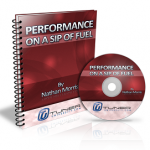Last time, we talked about the various ways that wheel weight affects vehicle handling, ride quality and both acceleration and deceleration.
While wheel weight might affect the performance of your car, wheel size can affect both the performance and the safety of your car. This article could frankly save your life or the life of someone near to you.
Unfortunately, there are a number of enthusiasts out there that by following typical forum/magazine myths about wheel sizing, have put us all in danger. Many of these myths have been around for literally decades.
You see, what I've found is that if enough people say something long enough and loud enough, everyone begins to accept it as fact even if it's not necessarily true.
This is certainly true of the general rules of wheel size selection that you get on forums and even in magazines.
Here are some of the myths you probably have been led to believe:
- Larger rims with lower profile tires handle better
- Wider tires give better grip and thus better handling
Both of these are (for almost all enthusiasts) entirely incorrect.
In this particular article, we're going to discuss wheel width. Next time we will talk about wheel diameter.
"But how could this be? Of course wider wheels handle better! The tire is wider so you've got more rubber on the road!" I hear cried from a member of the peanut gallery.
Another member of the forum certified expert crowd shouts: "All supercars have super wide tires and low profile tires, if they're doing it - of course it works!"
Unfortunately, both are only true in limited circumstances, and for most people reading this, they're never true.
The point that both of these claims miss is that the cars they are looking to and learning from, were designed with those wheel sizes in mind, before hand. It's not so much that wider tires do not give more grip - it's that if you do not also have the suspension to match, you may actually be creating a very dangerous situation indeed.
Think about it, have you ever seen a factory tuned car that came with significantly wider wheels or significantly larger wheels? You may have seen an inch or just over added, but no factory tuner worth their salt has ever gone much more than that - without also altering the suspension.
The primary reason, is fitting a car with a wheel or tire combo that has a different offset or width will affect camber, toe, and caster angles in the suspension. Lowering a car will also have a similar effect. These changes have significant impact on the handling of the car and can even make it downright unstable.
Even where the alignment is corrected, there can be significant changes in the scrub radius of the vehicle and unfortunately, in almost all production cars, scrub radius cannot be directly adjusted.
In order to compensate for the change in the suspension geometry you introduced with the new size wheels, you would need to completely revisit the suspension geometry and this would require extensive modifications in most cases, far outside the resources of the average home mechanic. To correctly address these changes, you would literally need access to an alignment rack and the ability to fabricate custom control arms, and other suspension pieces.
Danger of Wheel Width
Which brings me to the first main point of this article. Given most people's suspension tuning abilities and resources - straying far from the original tire and rim size will result in worsened handling and acceleration. In some cases, even downright dangerous handling characteristics at the limit , or in the event of a tire blow out or single wheel brake failure.
I'll go ahead and brace myself for the "but Nathan!s", but stick with me and I'll explain why getting this point will put you miles ahead of everyone else on the street - and even save you a good bit of money and possibly even your life.
Wheel Width
Simply put, this is where everyone goes wrong. The actual tire width isn't as important as the OFFSET of the wheel in this case however. Small changes in tire width are sometimes acceptable, though they still alter scrub radius, a key figure that determines how stable your car is, or isn't at the limit.
You see, in order to fit wider wheels, typically folks use smaller offset wheels to accomplish this. The lower the offset, the closer the wheel face is to the hub. The opposite applies for those who fit larger offset wheels to push the tire edge out towards the fender.
In both cases, the scrub radius of the car is altered. It either becomes smaller or larger. Both can create dramatically different handling characteristics at the limit, and for the street especially, all of those are highly undesirable.
Symptoms of modified scrub radius include the tendency for the steering wheel to 'rip' out of the hands of the driver during hard braking or turning. The wheels will also tend to react violently to imperfections in the road surface, especially when being pushed.
Aside from safety, it should also be noted that given a stock suspension setup, or a simply lowered one, you will not gain any additional rubber on the road.
Think for a moment about an inflated balloon. When it is sitting on a table, there is no weight on the balloon and the air pressure inside the balloon is constant. If you let air out of the balloon, more of the balloon will touch the table. If you put more air in, less and less will touch the table. Think of that as tire pressure. Then, apply pressure with your hand. You'll notice that you get more balloon on the table, the harder you press.
The point of this illustration is to illustrate that the rubber on the road is mostly a function of air pressure and weight on the tire. The actual tire size matters minimally.
Disclaimer (Added 7/25): Tires are infinitely more complex than a balloon. While the physics are at the very basic level the same, due to the complex construction of a tire, the basic physics are not a great model of what happens in the real world. It would take an extremely complicated simulator to even approach accurate predictions of tire width's effect on a car especially at the limit. That said, the suspension geometry argument holds water. Contact patch is a little more debatable but from the data I've seen and from first hand experience, it seems that wider tires give more contact patch to a point, but then it goes backwards (less grip). It also is not easy to model or predict. The best method to find out if you're competing is TRIAL AND ERROR, period. There's no free lunch or general rule here. If you are not competing, then the advice given in this article is probably as close to accurate as it can be.
How can that be? Well, when a vehicle is sitting at rest (easiest to illustrate) , regardless of the size of the tire, the same amount of tire will be in touch with the ground, given the same vehicle weight and tire pressure. The only difference will be the SHAPE of the contact patch. This is an oversimplification and yes there are other factors such as tire construction that play a role - but stick with me.
Wider wheels will give you a more rectangular patch, while thinner wheels will give you a narrow yet longer more square patch. The thinner wheels will therefore be better (and of course there are extremes in both cases) for straight line acceleration and braking. The wider ones, because of the direction of the forces on the tire tread in the corners, will be better for cornering at the expense of some straight line acceleration. Unfortunately, it's not quite that simple for say road racing as whatever gains you get in cornering, you'll probably give up in the ability to get back on the throttle early. Something you would need to test and tune for sure, no guaranteed rule of thumb there.
In other words, wider wheels do not always net an increase in actual grip, but they can under the right circumstances with the correct suspension to go with.
As a matter of fact, the number one place you can pick up GRIP is in the tire tread and compound you choose. A 6" wide tire, if it is appropriately sized and chosen for the application can handle over 1g of force if you use the right tire. You do not need a 14" wide tire to achieve that kind of grip.
We'll talk at another time about other ways that grip can be increased, just know for now that raw grip is not directly (and sometimes not at all) related to the width of the tire. Especially when we're dealing with modified production cars.
As a bonus, thinner wheels tend to be lighter as well. You can gain a lot of wheel and tire weight by going wider.
In Summary and Some Recommendations
So, I've said a lot in this article. It's quite long and there's a lot to chew on here. Please feel free to post your questions in the comments section and I'll see what I can do to answer them.
There's a lot to say about this topic, and I'll probably go in much deeper detail when I do my Braking & Handling online course coming up in I think May is when we're going to do that.
I'll be posting more information about that as we go along as I find out more. I'm thinking about doing it as a webcast event - where you can see me and hear me live or recorded (if you miss the live event), maybe even chat and ask questions in real time. Let me know what you think.
The big takeaway from this article is to stay as close to the stock width as you can. You will want to try to stick with the same offset wheel (possibly a few mm out or in, but try to stay at the same offset). Look at factory wheel sizes, especially optional sizes to get an idea of what offset and widths are appropriate for your car. Be sure when comparing wheel sizes and offsets from other vehicles to see if there are also suspension differences.
Next time we'll wheel diameter and overall tire package diameter. It turns out that sidewall choice can not only change the reliability of your car on the street, but it can also significantly alter your handling in fairly surprising ways.
Bonus
I'm leaving you this week with a fantastic write-up by an engineering firm for the Aftermarket Wheel industry. They seem to focus in some places on SUVs, however, the information in the write-up is relevant to all vehicles.
The article also backs up and expands on the claims I've made in this article so you'll know that I'm not completely off my rocker - since I know almost all of this goes against traditional "knowledge". Please remember to share this article with friends.
Look forward to the next part of this series on Friday.
Resources
Impact of Plus-Sized Wheel/Tire Fitments on Vehicle Stability (link fixed)
Extremely Limited Time Offer - 3 Days Only
Get a MASTERS DEGREE in Performance Tuning from the BEST in the Field for ONE low package price
For 3 days only, get ALL of our PREMIUM (not available anywhere else) Tuner University Courses featuring some of the greatest minds in motorsports:
- Top 10 Performance Myths Class (MP3 and Edited Transcript) - $29.95 value
- Performance on a Sip of Fuel Class (MP3 and class manual) - $69.95 value
- Header Design Secrets with John Grudynski (MP3 and transcript) - $69.95 value
- Dirty Secrets of Oil with Ryan Stark (MP3 and transcript) - $69.95 value
- Engine Tuning Secrets with Ben Strader of EFI University (MP3 and Transcript) - $69.95 value
Get all of the above courses (many of which not currently available anywhere else) for one single price of just $309.75 $69.95. A HUGE package savings.
You can also buy any of these individually through our resource center, but I don't know why you would as this is basically the whole store for the price of just 1 course. You'll get the MP3 recordings of each class as well as a transcript or companion manual with each course and you'll be able to download them all INSTANTLY.





